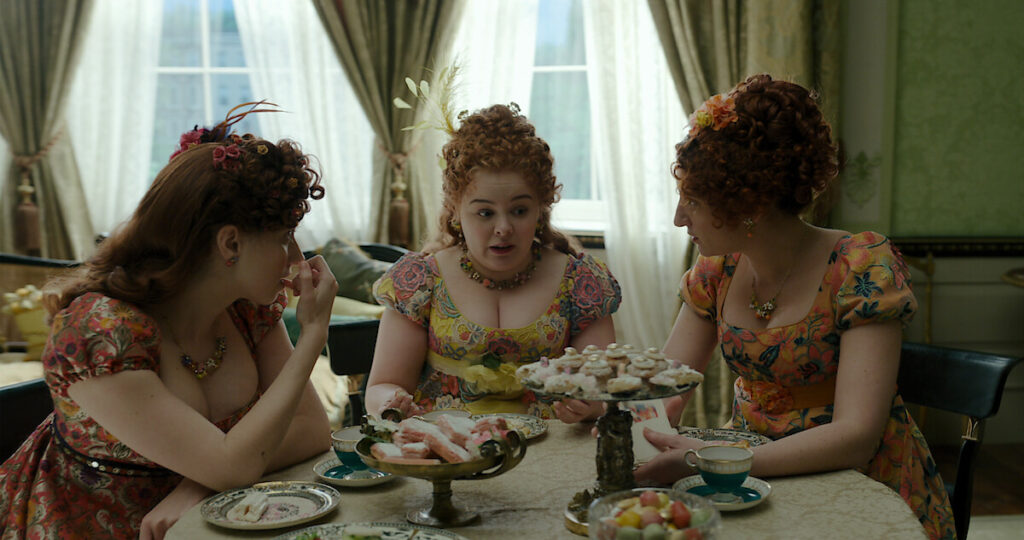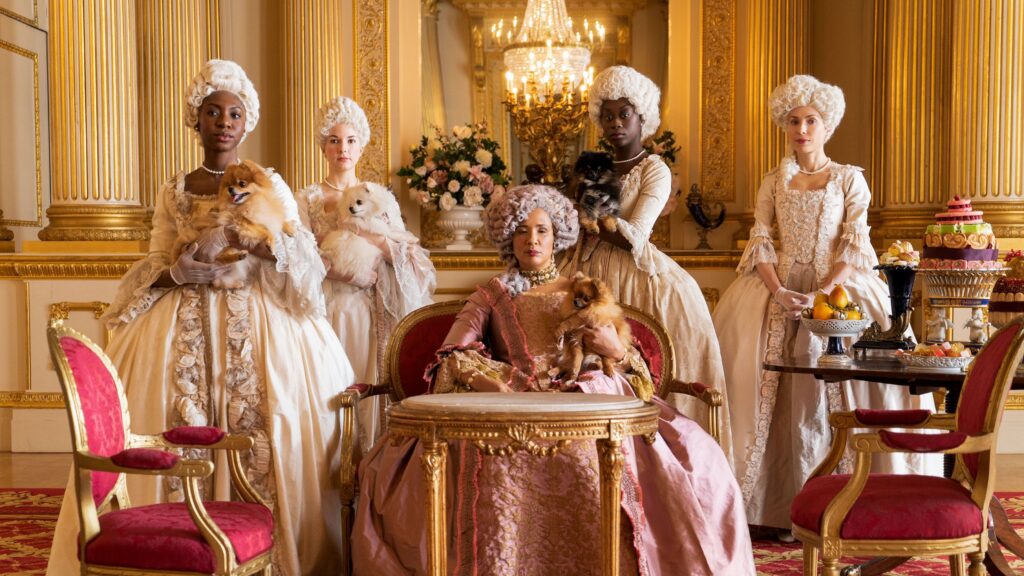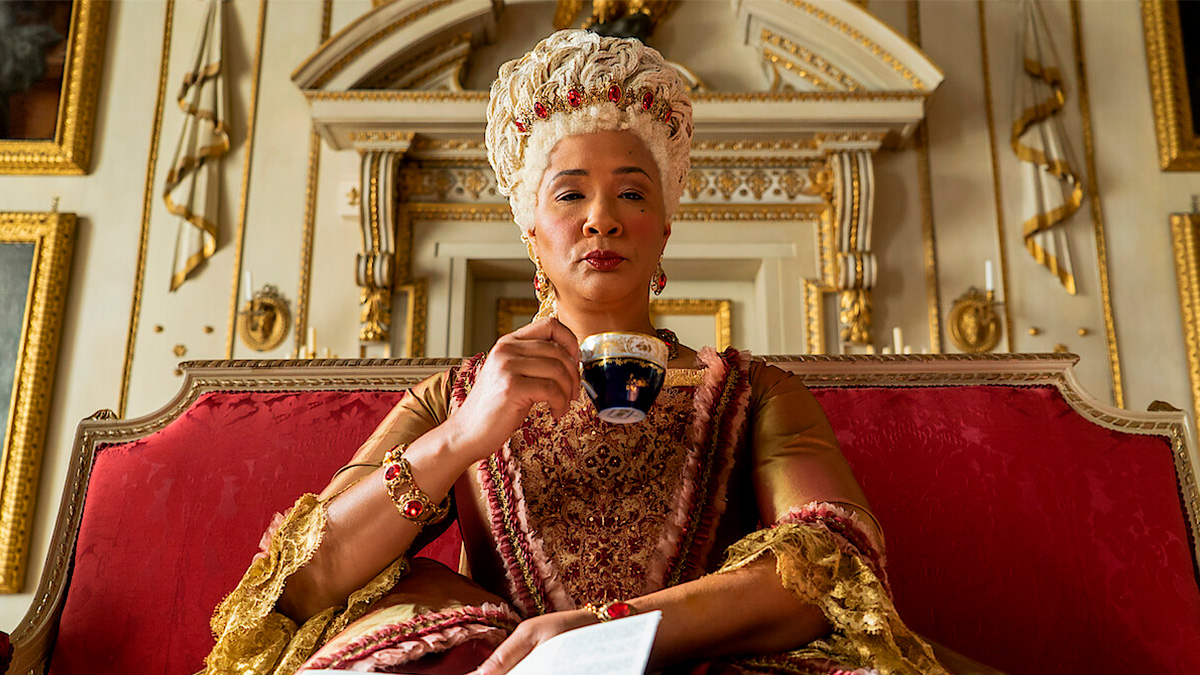Click here to read the Spanish version.
Ostentation and luxury are also magnified through the Regency culinary art served up in the most acclaimed period drama of recent times. In the first two seasons of ‘Bridgerton‘, the food on display represents some of the delicacies of the Regency era, such as venison, ice cream, sugary cakes and tea. These were luxuries that, in reality, the majority of the population of the time did not enjoy. For the working class were forced to eat precarious menus based on bread, porridge and meat that were a far cry from the sumptuous feasts depicted in the series.

Bridgerton is, after all, a fantasy in which all its characters live together in harmony. However, in the period in which it is set, in the early 19th century, the merchants of the British Empire would drive millions of Africans and their descendants into slavery because of the great English demand for tea, coffee and sugar. These foods could then trigger the death of many people, marking the bloody traces of their colonialist system based on subjugation.
Cultural meanings of food
Among the most coveted delicacies in modern England was venison. A status symbol that in the audio-visual play is projected during a dinner party in the second season. Lord Cowper declares: ‘I say, Featherington, I bet you could never find venison like this in America’. For, although the same types of deer existed on both continents, in England hunting deer on royal land was considered an exclusive privilege that condemned those who poached them. An illegal act that could lead directly to execution. In the series, for example, the merchant elite do not have access to this privilege, while other characters such as Featherington and Cowper do.

Simultaneously, sugar rose as another royal luxury, from £4 a year in 1704 to £18 in 1800. This increase in the supply of sugar was achieved at the expense of the slaves who cultivated it in the Caribbean, subjected to horror-based production methods. Despite its decadent origins, sugar became a symbol of delicacy, especially associated with women in English culture. Among the beneficiaries of this sugar boom were confectioners, such as the proprietors of Gunter’s, depicted in Bridgerton as a popular haunt.
At the time, social status was also determined by consumption habits and the foods that helped to construct and/or perform such status or image. Drinking tea was seen as a way of demonstrating respectability. But with a small dose of sugar as a sign of control and good taste, which is also glimpsed in this period romance spread over three seasons; to be continued in a fourth that is expected to be released around 2026.

